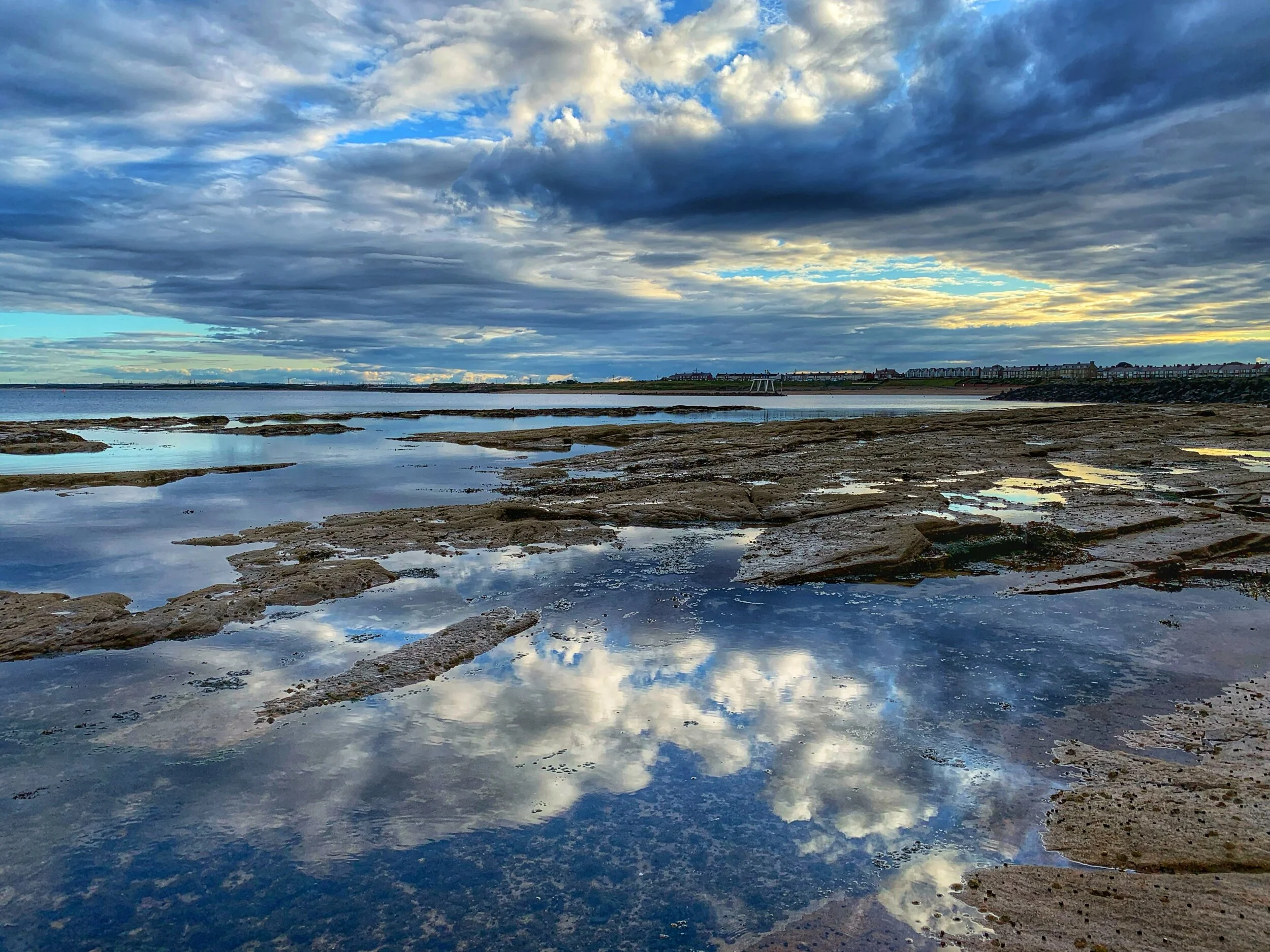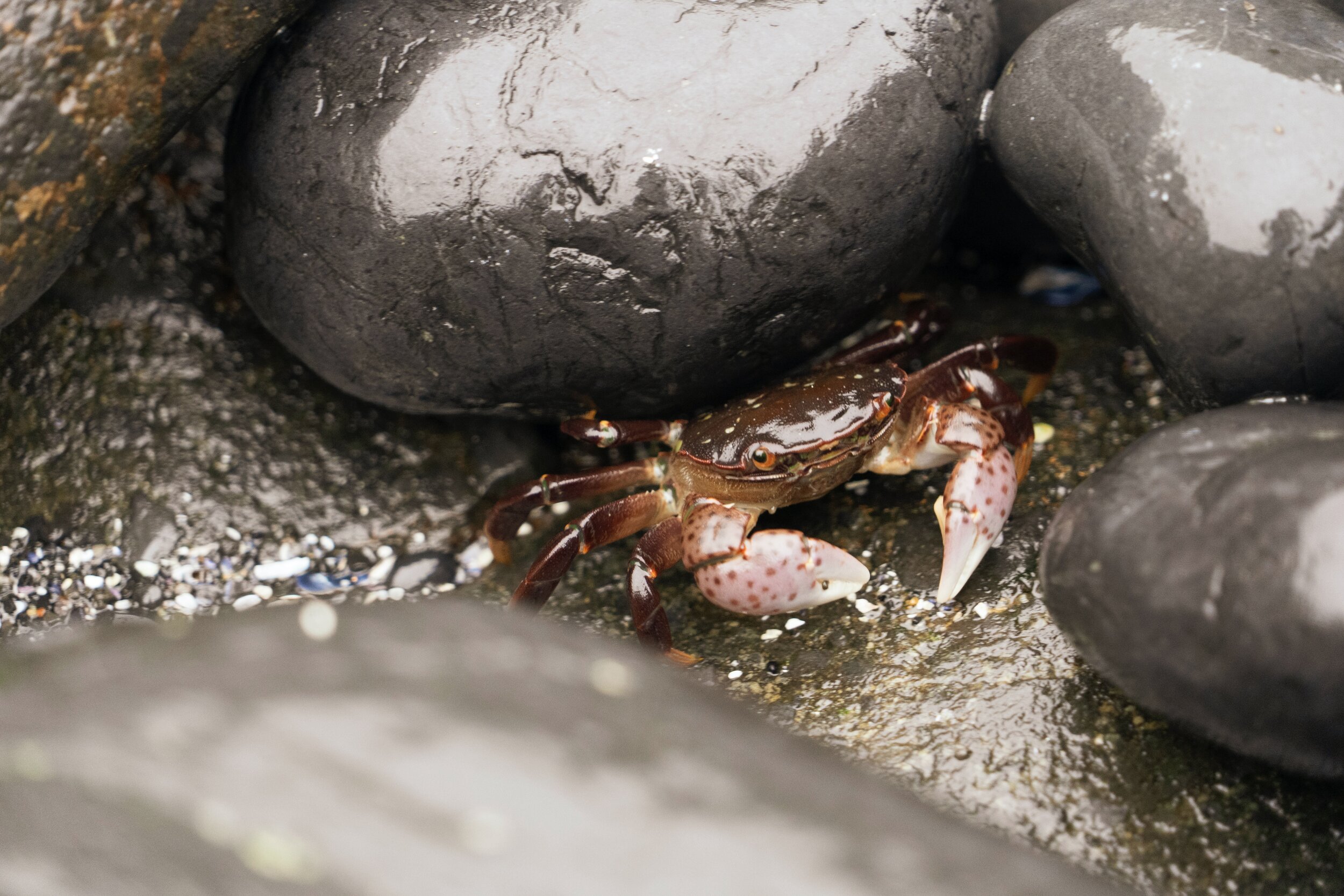Rockpools - Conservation of the ecosystem
Millie Parks
Rock pools are little worlds of their own. These complex and diverse ecosystems are so unlike anything else but are found almost everywhere on Earth. These shallow eroded pools can be found in the intertidal zone - an area that is underwater at high tide and above water at low tide. Rockpools are very important to the coastlines, acting as refuge and nurseries for a host of species which in turn can be a source of food for coastal communities. With our changing climate and the dangers that come with it, these unique ecosystems could be under threat.
Rockpools. Photo: Unsplash
Because of the tough living conditions found in rockpools, only the hardiest of organisms can permanently survive here. These species will often have hard shells made of calcium carbonate. Warming waters due to increasing temperatures will increase the acidity of our oceans. This increasing acidity will in turn weaken hard-shelled organisms who rely on calcification. Additionally, the changes in ocean temperatures alter the zones in which marine species can comfortably live. Warming oceans can push species north to find cooler waters which they are adapted to living in. Some species including Osilinus lineatus da Costa and Gibbula umbilicalis da Costa have undergone north and north-eastern range extensions within Britain in one study.
Crab under a rock. Photo: Unsplash
This tough environment also results in shorter food chains and lower diversity. Removing just one of these species can result in an entire ecosystem collapse. All over the world, holiday-makers flock to the seaside every year. This influx of tourists can put pressure on rock pools as tourists disturb and even remove organisms from rock pools. Additionally, litter from tourists and beach-goers can accumulate when the tides go out. This can trap organisms in addition to blocking sunlight for the sessile species.
Following rock pool etiquette is very important when visiting rock pools. Only having one organism in your bucket at one time and always returning organisms to the habitat you found them is vital in conserving rock pool ecosystems (The Wildlife Trusts, 2020a). Other etiquette includes not removing seaweeds or limpets, barnacles or whelks, and always returning stones as these provide shelter for smaller organisms. Avoid using a net as this can damage the delicate rock pool organisms (National Trust, 2020). Ensure you take all your litter with you, as litter is very harmful to the environment. Additionally, doing a beach clean is a thoughtful way to help conserve rock pools and the intertidal environment, for example by joining a #2minutebeach clean or a Surfers Against Sewage beach clean.
Anemones, urchins and mussels in a rockpool. Photo: Unsplash
Toxic chemicals and pollutants from accidental leaks can have devastating effects on rockpools. One famous example is the Torrey Canyon oil spill in 1967 which spilled approximately 36 million gallons of crude oil in the South West of England (Vaughan, 2017). 15,000 seabirds were estimated to have died from the spill. After the incident, the UK Government released 10,00 tonnes of toxic detergents to try and clean up the spill, but this actually proved fatal to marine life, inciting further destruction to the rock pools of the UK. (Vaughan, 2017). Most common species returned within 10 years, but one rare hermit crab is still missing from places directly treated with dispersants (Southward & Southward, 2011). Without the dispersants, recovery was recorded within 2-3 years but in intertidal habitats where dispersants were used, recovery took up to 15 years (Hawkins et al, 2017).
We all directly and indirectly have a role in the destruction of rock pools. Whether it is from a piece of litter that fell out our pockets or from our individual carbon footprints, our collective human impacts continually create a negative impact on our rocky shores. These intertidal ecosystems seem indestructible from the outset, but we have learned that as with everything in nature, there is a beautiful balance that must be maintained for the survival of the species that call rockpools home. Through collective action such as citizen science projects and grassroots organizations, we can expand our knowledge on rockpools and learn how better to protect them.



